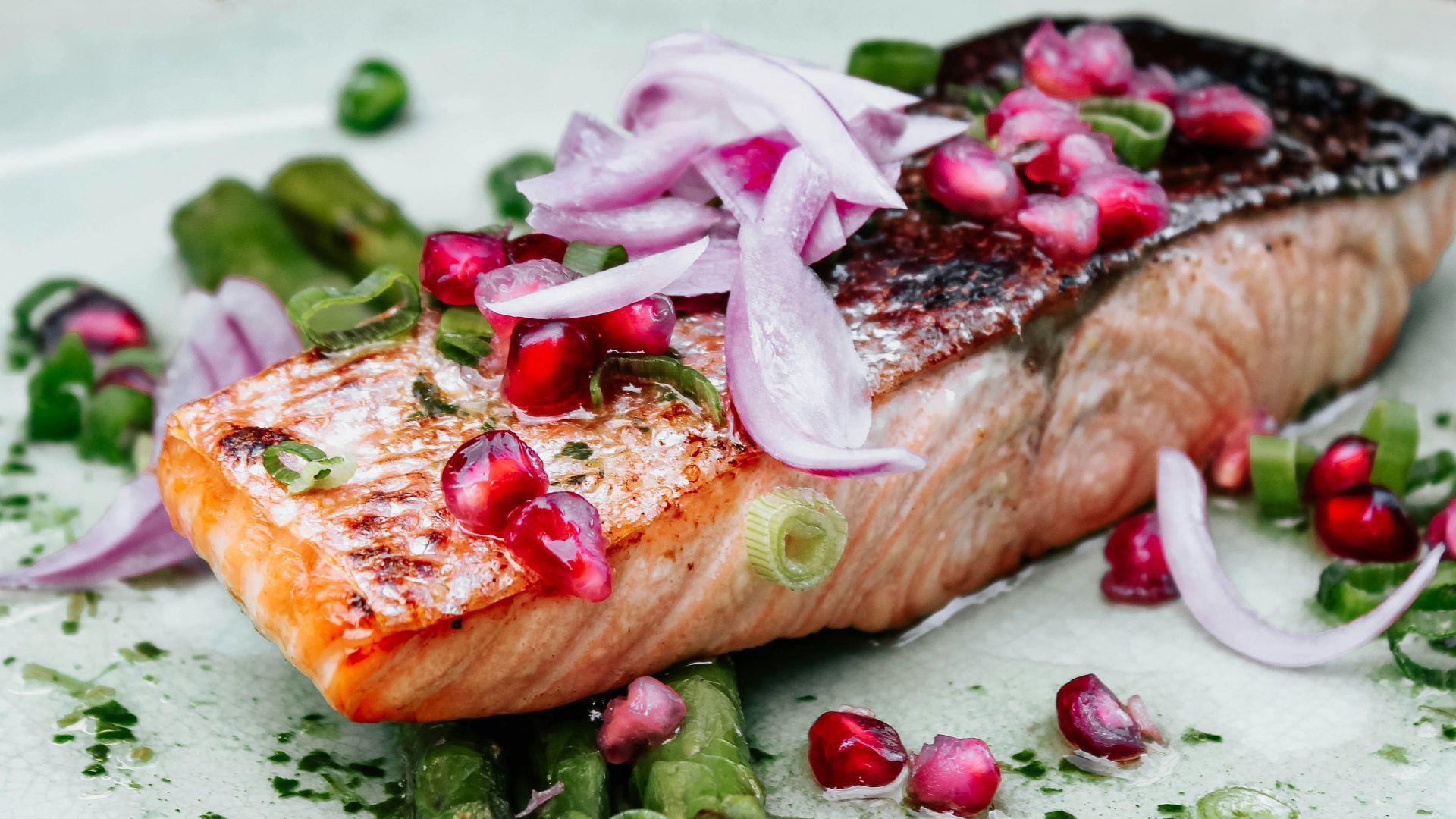10 Reasons You Should Eat More Fish & 10 Ways To Do It Safely
Fish Deserves More Credit
It starts with a simple swap: fish instead of something heavier. Then the perks start stacking up. But not everything about fish is a win. That’s why it helps to look at both sides. So, what makes fish a smart addition? And what’s the safest way to keep it that way? We’ll begin by answering the first question.
 micheile henderson on Unsplash
micheile henderson on Unsplash
1. High In Omega-3s
Experts in kitchens and labs agree: Omega-3s are where fish truly shine. These essential fatty acids aren’t made inside the human body, but they’re key for reducing triglycerides and lowering blood pressure. They work better than many protein sources.
2. Supports Heart Health
The American Heart Association recommends eating fish more than twice a week for a reason. Regular fish consumption can decrease the risk of heart attacks and strokes. Countries with high seafood intake show markedly lower rates of cardiovascular disease. So, fish is a time-tested prevention.
 United States House of Representatives - Office of Martha Roby on Wikimedia
United States House of Representatives - Office of Martha Roby on Wikimedia
3. Boosts Brain Function
Neurons thrive on DHA, a primary omega-3 found in fish. Regular intake is linked to improved memory and slower cognitive decline. In older adults, weekly servings may help preserve brain function. And for pregnant women, a fish-rich diet can support cognitive development in children.
4. Improves Mood Stability
Populations with higher fish intake often show lower rates of depression. Surprising, right? The link centers on omega-3 fatty acids, which help regulate neurotransmitters like serotonin and dopamine. Some studies suggest fish oil supplements may also enhance SSRI effects in treatment-resistant depression, but this requires more evidence.
5. Strengthens Eye Health
Vision depends heavily on the right nutrients, and fish provides several, particularly DHA and vitamin A. These components help protect the retina and lower the risk of macular degeneration. Diets high in omega-3s reduce dry eye symptoms and slow age-related eye diseases.
6. Packed With Protein
Compared ounce-for-ounce, fish competes closely with beef and poultry in protein content. It’s an ideal choice for people who need lean, high-quality protein. Proteins from fish are also easier to digest, which makes them perfect for all ages, from toddlers to seniors recovering from illness or injury.
7. Promotes Healthy Skin
Clear skin starts beneath the surface, and fish have the nutrients to support it. Omega-3s reduce inflammation, calming conditions like eczema and acne. Selenium helps preserve skin elasticity and defend against UV damage. So, yes, your nutrition intake shows up in the mirror over time.
8. Low In Saturated Fat
Many popular proteins come with a cholesterol warning, but fish doesn’t. Most varieties are low in saturated fat. This is an important factor for heart and liver health. Choosing fish more often can help lower overall dietary fat without sacrificing taste or texture.
9. Aids In Weight Loss
Effective weight control depends more on fullness than cutting calories. Fish provides high-quality protein that promotes satiety without excess bulk. Research in Obesity Reviews found that participants who ate fish lost more body fat than those who ate meat despite identical calories.
10. Reduces Inflammation
Chronic inflammation contributes to a range of conditions, including certain cancers. Thankfully, fish can counter this process. Omega-3s suppress pro-inflammatory molecules like cytokines and prostaglandins. Individuals with rheumatoid arthritis experience reduced joint pain and morning stiffness when they consume fish regularly
Getting these benefits depends on factors like the fish you pick and how it’s made. So, let’s see how to keep your fish meal safe and worth it.
1. Choose Low-Mercury Fish
Long-term mercury exposure has been linked to cognitive decline, and some fish carry a heavier burden than others. For example, swordfish, king mackerel, and tilefish. Safer bets include salmon, sardines, and trout. These offer all the nutrition without the risk.
2. Portion Sizes
More doesn’t always mean better, especially with fish. The FDA recommends two 4-ounce servings per week for adults. Eating more than that (even the lower-mercury varieties) isn’t healthy. Smaller portions still deliver all the benefits, minus the potential buildup of contaminants over time.
3. Avoid Cross-Contamination
Clean counters don’t always guarantee safe cooking. What matters more is the route bacteria take. Using the same board for fish and lettuce might seem harmless, but even microscopic residue can carry Campylobacter or E. coli. Kitchen safety guidelines stress full separation during seafood prep.
4. Check Sustainability Labels
Not all fish are caught or farmed responsibly. Certifications like MSC (Marine Stewardship Council) or ASC (Aquaculture Stewardship Council) indicate ethical sourcing and safe practices. These labels also suggest reduced environmental contaminants and better feed quality. It’s a simple scan to pick a good fish variety.
5. Avoid Raw During Pregnancy
Raw fish may look appealing, but it’s not worth the risk during pregnancy. Parasites and bacteria such as Listeria can cause serious complications. Medical institutions like the Mayo Clinic strongly advise eating thoroughly cooked fish during this time to ensure the mother's and the child's safety.
6. Limit Fried Options
Just like any other food, fish loses its perks when it’s deep-fried. That golden crust adds trans fats and calories instead. Pan-searing, baking, grilling, or steaming are the options that retain flavor without sacrificing nutrition. And yes, you can get that crunch without batter-heavy techniques.
7. Rotate Fish Types
Eating the same fish every week might feel convenient, but it increases the risk of overexposure to specific contaminants or allergens. On the other hand, rotating between species adds nutrient variety while lowering risk. Diversity on the plate is a smart long-term strategy for both taste and safety.
8. Store It Properly
Fresh fish deteriorates fast. If you’re not going to cook it within 1–2 days, freeze it properly. Refrigeration should be at or below 40°F, and storage on crushed ice helps preserve texture. Improper storage is the main cause of spoilage and illness, even with high-quality fillets.
9. Cook It Thoroughly
Undercooked fish can harbor parasites and bacteria such as Salmonella and Anisakis. The FDA recommends cooking fish to an internal temperature of 145°F. Fully cooked fish must look opaque, and you should be able to flake it easily with a fork. Visual cues help, but a thermometer offers certainty.
10. Buy From Trusted Sources
Fish bought from “fishy” vendors may not be fresh or safe. That’s why you need to buy it from a reputable market or store that follows all the handling and transport regulations to protect against contamination. If the smell, color, or origin feels off, it probably is. In seafood, trust is built at the counter.


























